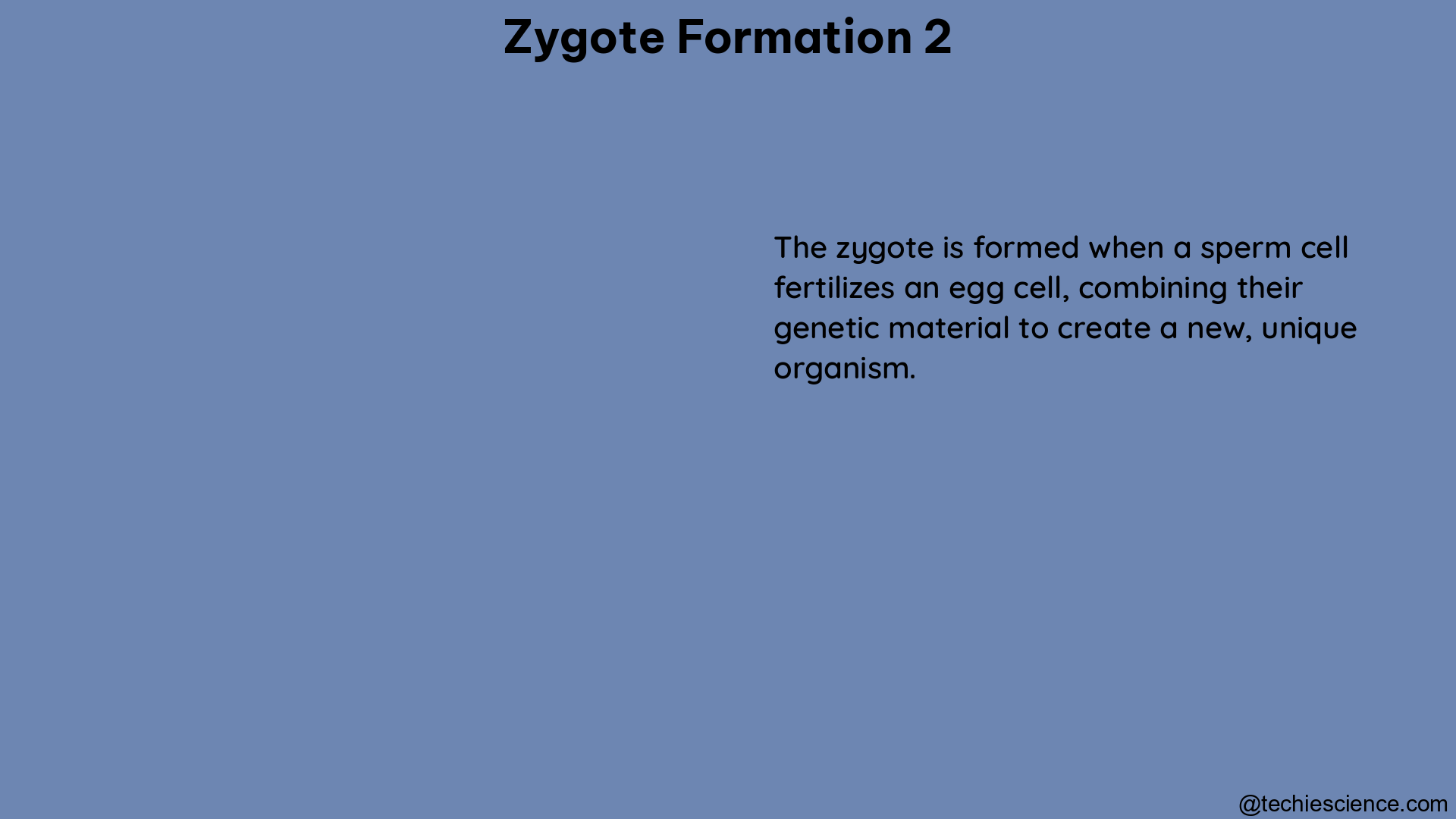Zygote formation 2, also known as the second cell division of the zygote, is a crucial step in the establishment of pregnancy and placental development. During this process, the zygote divides into two cells, which then continue to divide and differentiate into the various cell types that make up the embryo and placenta.
Understanding the Measurement of Preimplantation Embryo Development
One key aspect of zygote formation 2 is the measurement of static and dynamic properties of preimplantation embryo development. According to a study published in the National Center for Biotechnology Information (NCBI), the division of the zygote begins on Day 2, and two cells are formed. This study also notes that genome-wide screening of blastomeres in IVF cycles has revealed cells with complex large-scale structural chromosomal imbalances, mostly by mitotic non-disjunction. A vast array of chromosomal errors has been detected in human embryos throughout all stages of pre-implantation development.
| Characteristic | Observation |
|---|---|
| Zygote Division | Begins on Day 2, forming two cells |
| Chromosomal Imbalances | Complex large-scale structural chromosomal imbalances, mostly by mitotic non-disjunction |
| Chromosomal Errors | Detected in human embryos throughout all stages of pre-implantation development |
Estimating Preimplantation Loss and Fecundability

Another study published in the NCBI has constructed an empirical framework aimed at producing plausible estimates of fecundability, sterility, transient anovulation, patterns of intercourse, and the proportion of ova fertilized in the presence of sperm. After combining all this information, they generated an estimation of preimplantation loss, to be considered an average for fertile couples, concluding that “under a plausible range of assumptions… 40 to 50% of fertilized ova fail to implant” even in normally fertile couples.
In addition, a recent investigation of Japanese couples trying to conceive their first child utilized the “time to conception” (TTP) as either “natural” or “total”. Using TTP-total and TTP-natural, the sterile proportion of the whole sample was, respectively, 2% and 14%, and the interquartile range of fecundability (IQRF) was, respectively, 0.10 (CI: 0.04, 0.19) and 0.11 (CI: 0.05, 0.19). This investigation concluded that fecundability is overall lower at higher ages, while interquartile ranges are overlapping.
| Characteristic | Observation |
|---|---|
| Preimplantation Loss | 40 to 50% of fertilized ova fail to implant, even in normally fertile couples |
| Sterile Proportion | 2% (TTP-total) and 14% (TTP-natural) |
| Interquartile Range of Fecundability (IQRF) | 0.10 (CI: 0.04, 0.19) and 0.11 (CI: 0.05, 0.19) |
| Fecundability | Lower at higher ages, with overlapping interquartile ranges |
The Biological Specification of Zygote Formation 2
In terms of the biological specification of zygote formation 2, it is important to note that the zygote is the result of the fusion of two gametes, the sperm and the egg, which have undergone meiosis to reduce their chromosome number by half. The zygote then undergoes a series of mitotic divisions to form the blastocyst, which eventually implants in the uterus and gives rise to the embryo.
| Stage | Description |
|---|---|
| Gamete Fusion | Sperm and egg fuse, forming the zygote |
| Meiosis | Gametes undergo meiosis to reduce their chromosome number by half |
| Mitotic Divisions | Zygote undergoes a series of mitotic divisions to form the blastocyst |
| Implantation | Blastocyst implants in the uterus, giving rise to the embryo |
Improving Genome Editing Efficiency with the Alt-R HDR Enhancer V2
In order to improve the efficiency of genome editing in CRISPR-Cas9 experiments, IDT has developed the Alt-R HDR Enhancer V2, which has been shown to greatly increase the rate of HDR. The Alt-R HDR Enhancer V2 outperforms other small molecules from the literature in increasing HDR efficiency.
| Product | Description |
|---|---|
| Alt-R HDR Enhancer V2 | Developed by IDT to greatly increase the rate of HDR in CRISPR-Cas9 experiments |
| HDR Efficiency | Alt-R HDR Enhancer V2 outperforms other small molecules in increasing HDR efficiency |
By understanding the measurement of preimplantation embryo development, estimating preimplantation loss and fecundability, and utilizing tools like the Alt-R HDR Enhancer V2 to improve genome editing efficiency, researchers and clinicians can gain valuable insights into the critical process of zygote formation 2.
References:
– NCBI Study on Preimplantation Embryo Development
– IDT Alt-R HDR Enhancer V2
– Zygote Formation Overview
– Empirical Framework for Fecundability Estimation
– Investigation of Japanese Couples’ Time to Conception

The lambdageeks.com Core SME Team is a group of experienced subject matter experts from diverse scientific and technical fields including Physics, Chemistry, Technology,Electronics & Electrical Engineering, Automotive, Mechanical Engineering. Our team collaborates to create high-quality, well-researched articles on a wide range of science and technology topics for the lambdageeks.com website.
All Our Senior SME are having more than 7 Years of experience in the respective fields . They are either Working Industry Professionals or assocaited With different Universities. Refer Our Authors Page to get to know About our Core SMEs.